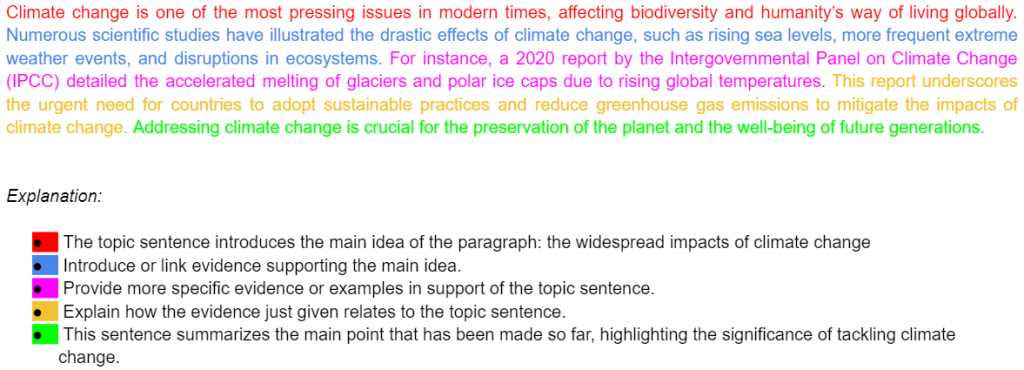Writing a research paper is a journey of curiosity and discovery. With a multitude of questions and a desire for knowledge, you begin your academic writing adventure, seeking answers and delving deep into analysis. Research papers are more than just fancy words strung together; they’re a serious effort to discover new knowledge or understand a topic deeply.
In this guide, we’re going on this journey together! We’ll start by picking a topic that grabs our interest, then dive into exploring various sources for valuable information. Step by step, we’ll build our paper, keeping eyes on the treasure: a well-organized, thoughtful, and convincing research paper.
Are you ready? Let’s set sail on this adventure of preparing a research paper that shines with clarity, structure, and valuable insights!
Understanding your task clearly
Starting your research paper right means really getting what you need to do. Before diving in, let’s break down the steps to understand your assignment better:
- Read it over. Go through the assignment sheet well. If anything seems unclear, don’t hesitate to ask your professor for some clarity.
- Know the basics. Ensure you understand the paper’s objectives, the due date, the required length, the formatting rules, and the submission process.
- Make a checklist. Jot down the main things you need to do or include in your paper. It’s a good feeling to check things off as you get them done.
- Time management. Think about how long you’ve got to get the paper done. Be smart about it. Split your time for researching, writing, and then checking everything over.
By following these simple steps in preparing your research paper, you’ll be on the right path, avoiding last-minute stress.
Choosing the right topic for your research paper
Selecting a topic for your research paper is a crucial step that requires careful consideration. Here are some ways to come up with a research topic:
- Brainstorming. Spend some time brainstorming and jotting down any ideas that come to mind. You could do this alone or discuss ideas with a classmate or professor.
- Free writing. Try to write constantly about a broad topic for a few minutes. Don’t hold back, write down anything that comes to mind. This can help uncover interesting subtopics.
- Explore existing research. Review existing research papers relevant to your field. Discussions or recommendations in these papers often present new tips or topics that need further exploration.
- Consult with classmates or professors. Sometimes, a simple discussion can help upgrade your thoughts and guide you toward a specific research topic.
When choosing your research topic, it’s essential to guarantee it’s not too broad or too narrow. Your topic should be intriguing, aligned with your assignment’s requirements, and suitable for research. It should allow for an original contribution, providing your paper’s uniqueness.
For example:
- Too broad/not specific. A research paper discussing the causes of poverty worldwide.
- More specific and original. Investigating the impact of economic policies on the poverty rates in a specific country or region during a defined period.
By selecting a well-described topic, you set a clear direction for your research and improve the paper’s overall quality and relevance.

Kickstarting your research: The preliminary stage
Starting your research paper involves searching for existing resources and information. Here’s a guide to working on insightful preliminary research for your paper:
- Exploration for your research paper. Dive into various sources such as journals, books, and credible online websites. Explore discussions and themes relevant to your paper’s subject.
- Various perspectives. Seek sources that offer various viewpoints. Engage with controversial opinions and arguments to ensure your research paper is wide and well-rounded.
- Explore overlooked areas and controversies. Begin by identifying gaps or unexplored topics in your research. Look for elements that seem overlooked or topics that cause discussion or disagreement. Using these aspects as focal points can make your research paper more effective and insightful.
- Stay updated. Keep an eye on the latest developments or discoveries that could improve or boost the existing body of research for your paper.
- Formulating research questions for your paper. Prepare clear and specific research questions to navigate your study effectively. Use this format to shape your questions: “I aim to explore how/why/what…”
Creating research questions will clarify and guide your paper, allowing your study to be more organized and focused. Doing some early research helps set a strong base for your paper. It lets you see what information is already out there and find spots where your paper can add new ideas or views.
Prepare a strong thesis statement
Your thesis statement is the cornerstone of your research paper. It should clearly present your main argument and show the direction of your research. Starting with a research question? Your thesis statement should provide a clear answer.
- Clarity and focus. Keep the thesis statement clear and focused. It should briefly present your main argument in one or two sentences.
- Make a claim. Ensure that your thesis makes a claim or presents a viewpoint that requires supporting evidence or analysis. This means that it should not just be a simple statement of fact; it should take a position that others might challenge.
- Coherence. Make sure that your thesis statement ties together all parts of your research paper, ensuring each section relates back to your thesis.
- Flexibility. Remember that as your research evolves, you might need to develop your thesis statement to unite with the new information you discover.
Use the thesis statement as a compass for your writing, guiding every paragraph to support and build on your central claim.
Organize your thoughts with a research paper outline
An outline is a powerful tool that helps to organize your thoughts and ideas systematically for your research paper. It acts like a roadmap, guiding you through the key topics, arguments, and supporting evidence you plan to include in different sections of your paper.
- Structure. Create a well-structured outline split into clear headings and subheadings. This approach will give you a preview of your research paper’s flow and organization.
- Efficiency. Investing time in preparing a detailed outline can make the writing process more straightforward and efficient, helping you stay focused on your main points and arguments.
- Using AI tools. AI tools like ChatGPT can help in brainstorming and outlining. However, it’s essential to use these tools responsibly. Ensure that the content generated by AI is not directly copied and presented as your original work, as this is considered plagiarism and is likely to be detected by university plagiarism checkers. You can always self-check for plagiarism on our plagiarism checker platform before submitting your work.
Creating a thoughtful and detailed outline is a proactive step that can help streamline the writing process, allowing you to present a well-organized and compelling research paper.

Guidelines for writing the first draft
Now that you’ve mapped out your strategy and organized your thoughts, it’s time to dive into the writing process. Let’s explore how to effectively write the first draft of your research paper, focusing on structure, paragraph coherence, and citation.
Strategies for starting your first draft
Launching the first draft of your research paper is a significant step. It’s essential not to seek perfection at this stage; it comes later. Here’s a guide to the primary phases of your writing:
- Focus on progress. Allow your ideas to flow freely without overthinking. Concentrate on making progress, knowing you can always review and refine your work later.
- Organization is key. Ensure that your paper has a logical flow. Organize your paragraphs and sentences clearly, which will be beneficial when editing the second draft.
- Clarity in expression. Try to express your thoughts as transparently as possible. It will make the revision process smoother, helping you remember exactly what you planned to communicate.
- Flexible starting point. You don’t necessarily have to begin with the introduction. Start wherever you feel most comfortable—some find it easier to tackle the challenging sections first, while others prefer starting with simpler parts. Direct to your outline as a roadmap to guide your writing process.
- Preserve your work. Avoid deleting important text segments. If some parts don’t seem to fit or you feel they need changes, consider moving them to a separate document instead of deleting them. Keeping this content could prove beneficial as your research paper becomes.
Paragraph structure
Paragraphs are the essential units of construction in a research paper, allowing for the organized and clear presentation of ideas and findings. A well-structured paragraph encourages the development and clarity of ideas, while a poorly organized paragraph can block the flow and understanding of the text.
Here is an example of a well-structured paragraph.

Citing sources
Keeping accurate records of your sources is a crucial aspect of academic writing. Proper citation not only improves the credibility of your research but also helps avoid unintentional plagiarism.
Every time information is obtained from a source, it is essential to document it accurately, catching the author, title, publication date, and other relevant details. This detailed approach guarantees that each piece of borrowed information is traceable to its original source, promoting integrity and reliability in your work.
Creating the introduction
The introduction of your research paper is crucial in setting the stage for the readers. It should briefly answer three crucial questions to provide a clear understanding of its purpose and the direction of the study: What is the paper about? Why should it be read? And, how will the arguments be constructed?
- What? Begin with specificity. Clearly state the topic of your paper, introduce essential background information, and explain any crucial terms or concepts. This makes it easier for readers to understand what your research is about.
- Why? Promote the significance of your study. Address why your paper is essential by explaining what fresh insights or materials you are bringing to the table. Clarify the essential issues your research will help define or resolve. This part of the introduction requires you to clearly communicate the significance and relevance of your work.
- How? Create a roadmap in your introduction. Briefly summarize the main points that will be discussed in your paper, listing them in the order they will appear. This allows readers to easily navigate through your arguments and know what to expect as they read your research.
By clearly addressing these parts in the introduction, you ensure that the reader is well-prepared and motivated to engage with your research paper with a clear understanding of its objective and methodology.
Create a connected body of text
Creating the body of your text is a crucial stage where writers often face challenges, primarily related to structuring and organizing the content. Having an outline is invaluable, serving as a roadmap for your writing. However, it’s essential to remember that an outline is a flexible guide. You don’t have to follow it exactly; you can move around the information and arguments to where they fit best.
Use your thesis statement and topic sentences effectively to keep focus and harmony. Here are a few things to check for consistency and flow:
- Matching with the thesis statement. Ensure that each topic sentence unites well with the thesis statement, improving the central argument.
- Comparison of topic sentences. Compare the topic sentences with each other to guarantee variety and logical progression in the discussion.
- Consistency within paragraphs. Make sure each sentence in a paragraph connects well with its main topic sentence, keeping the paragraph focused.
Be mindful of repeating things. If two paragraphs seem to stay on similar aspects, they should offer different perspectives or discuss various facets of the topic. Seek seamless transitions between sentences, paragraphs, and different sections to keep a smooth and logical flow throughout the text.
Prepare the conclusion
The conclusion of your research paper plays a significant role in wrapping up your argument, leaving the reader with a sense of closure and clarity.
Here’s how to effectively conclude your paper:
- Summarize the journey. Review the key points and arguments made in the paper, highlighting how they join together smoothly to support your thesis statement.
- Creating a sense of closure. Ensure that the audience finishes the paper with a clear understanding of your conclusions, feeling that the questions posed at the beginning have been resolved.
- Explore broader effects. Consider discussing how your arguments have a broader importance. Also, think about what your findings might mean for future research and any unanswered questions that appeared during your exploration of the topic.
Remember, a powerful conclusion reduces the main points of your paper, signifies a sense of completion, and leaves the reader with a lasting impression of your work’s significance.
Remember, a powerful conclusion highlights the main points of your paper, signifies a sense of fulfillment, and leaves the reader with a lasting impression of your work’s significance. Avoid these common mistakes in your conclusion:
- Adding new information. Avoid introducing new arguments or essential details. The conclusion is for summarizing and reflecting, not for presenting new points.
- Being lengthy. Keep the conclusion concise and to the point. It shouldn’t take up more space than necessary to bring closure to your argument.
- Using overused phrases. Try not to start your conclusion with worn-out phrases such as ‘In conclusion.’ Be creative in showing that your paper is coming to an end.

Improving the second draft of your research paper
Perfecting the second draft is an important step in creating an effective research paper. This stage is crucial to ensure your work is in line with the assignment’s goals and communicates your ideas effectively. Here’s what to focus on:
- Matching with your plan. Ensure that the first draft matches your initial vision and accurately responds to the assignment’s requirements.
- Supporting your points. Check your draft for any big or unsupported statements. Make sure every point is clear and has strong support. Take out any ideas that aren’t backed up well.
- Organizing your ideas. Reconsider the organization of your sections or paragraphs. Move your content to improve flow and coherence, guaranteeing each part is in the most effective place.
- Improve your ideas. Don’t hesitate to remove or shorten old ideas that no longer fit. Feel free to add new ideas that improve the quality and relevance of your paper.
Remember, the goal is to make your paper clear, interesting, and right for the assignment.
Improving your paper: Revision and proofreading
The revision and proofreading stages are essential in refining your paper. They guarantee that the paper performs all the necessary tasks as per the assignment’s requirements and is expressed in a readable and clear manner. Here’s a breakdown of key areas to focus on during the revision process:
High-level overview
When editing your paper, focus on its overall structure and commitment to the assignment guidelines. Ensure your paper is organized, logically flowing, and fully addresses the assignment’s objectives. Consider the following key aspects:
- Verify your paper meets all requirements outlined in your assignment sheet.
- Review the organization and flow of your paragraphs, ensuring each section connects logically.
- Ensure each paragraph aligns with and supports the introduction and thesis statement.
- Consider whether your main points are clearly presented, effectively communicating your ideas to the reader.
Detail-oriented revision
Focus on improving the smaller elements of your paper, ensuring everything is polished and clearly presented:
- Confirm each paragraph’s content is focused, with each sentence supporting the main idea, and technical terms explained.
- Remove any unnecessary or irrelevant information to maintain clarity and conciseness in your discussion.
- Check the sentence structures, grammar, and transitions to make sure your ideas are presented clearly and flow well. Using our platform can also assist in proofreading and improving the overall quality of your writing.
- Check the formatting of headings, text, and references, guaranteeing consistency and commitment to your assigned citation style, such as APA or MLA.
Each of these points will help in fine-tuning your paper, making it more coherent, readable, and aligned with academic standards.
Conclusion
| Writing a research paper is a powerful journey. Start with a clear, exciting topic. Explore deeply, collect various viewpoints, and build a strong thesis statement. Use a clear outline and engaging introduction to guide your writing. Don’t settle for your first draft; refine and proofread to make your work shine. Every step in this process is crucial, turning the challenge of research writing into a masterpiece of knowledge and discovery. With these guidelines, you’re ready to create a research paper that stands out with importance and innovation. |
